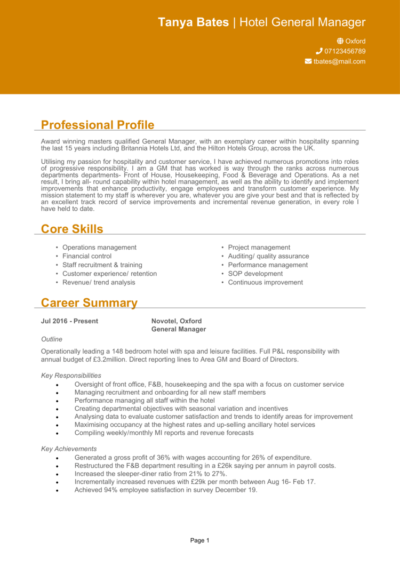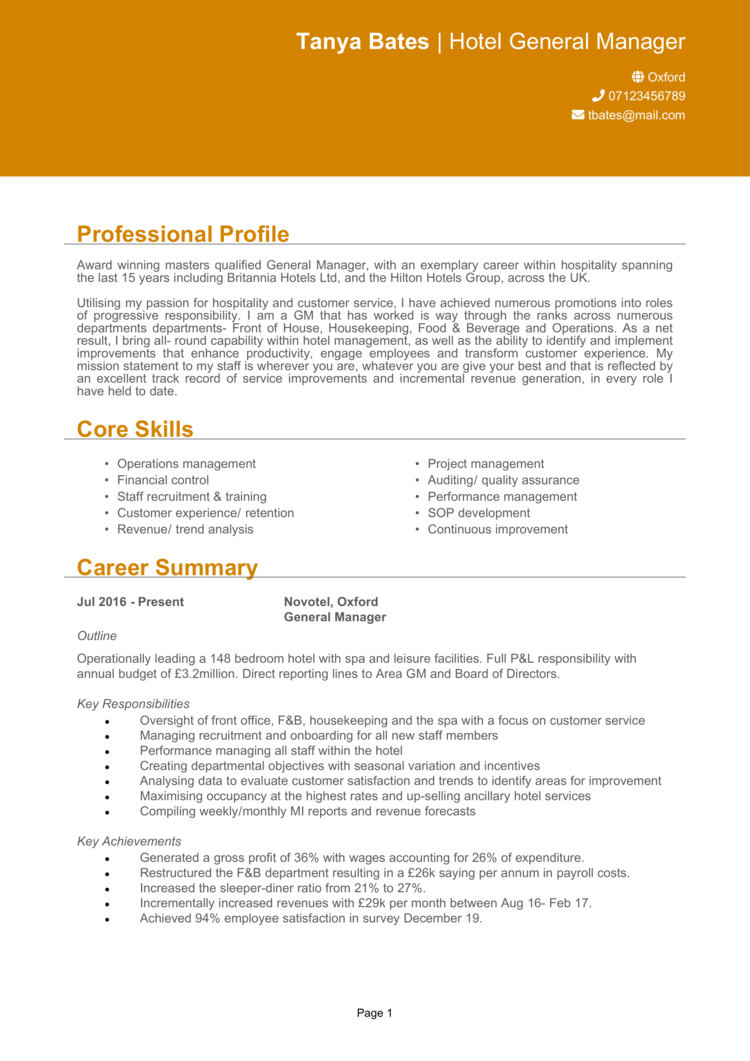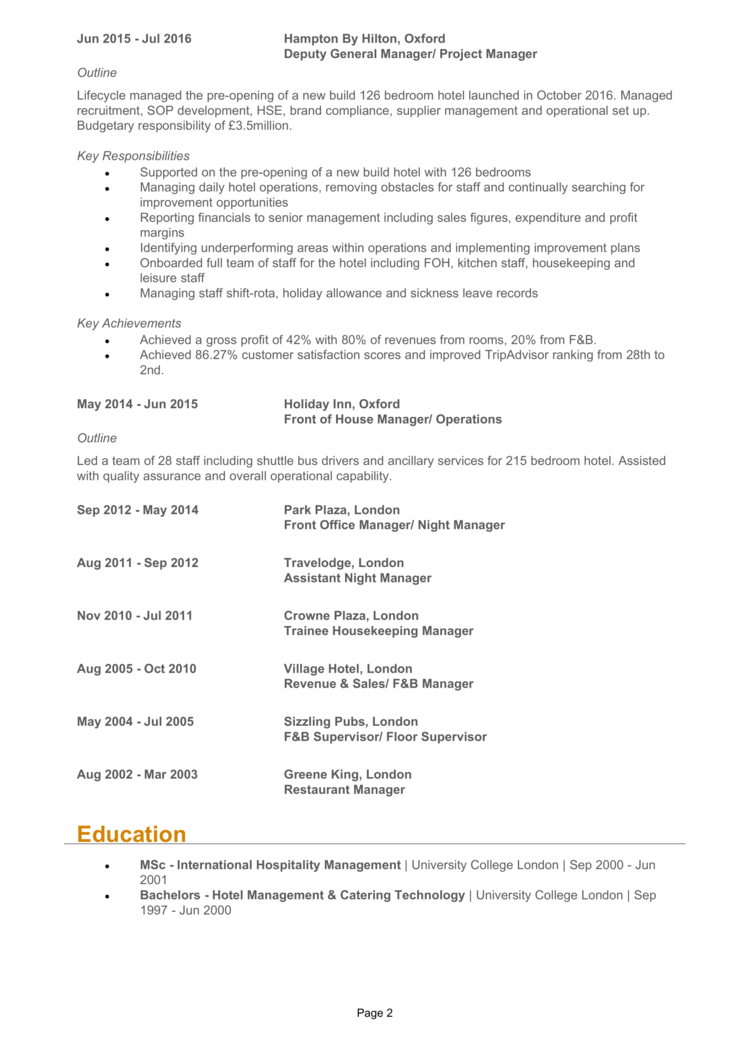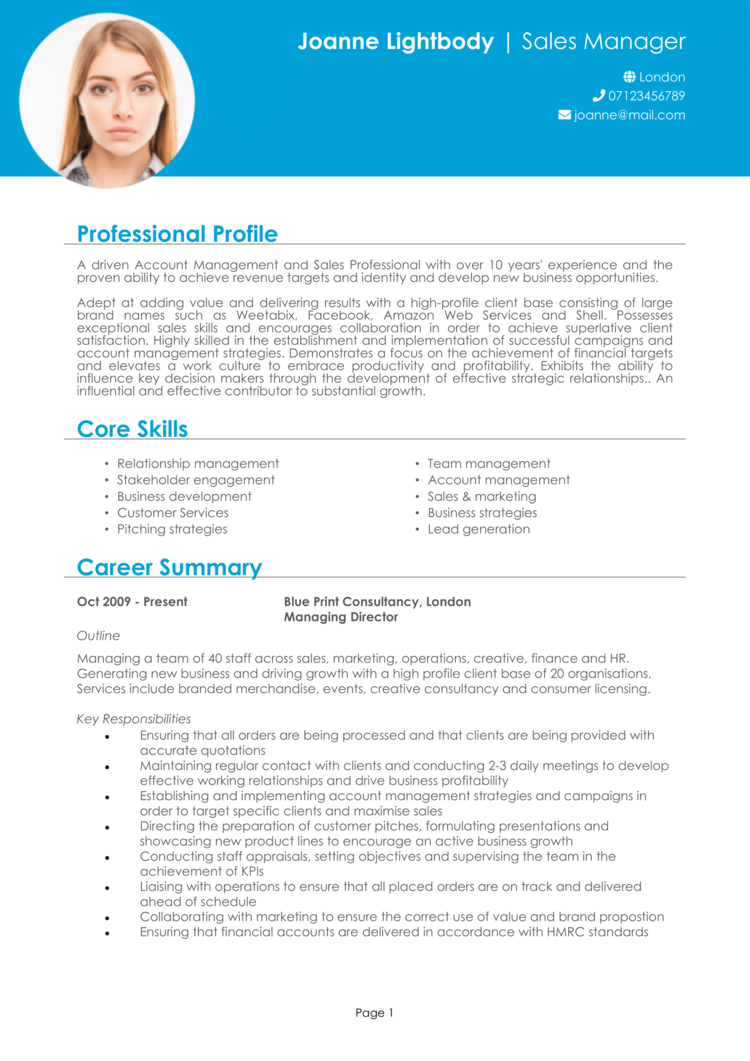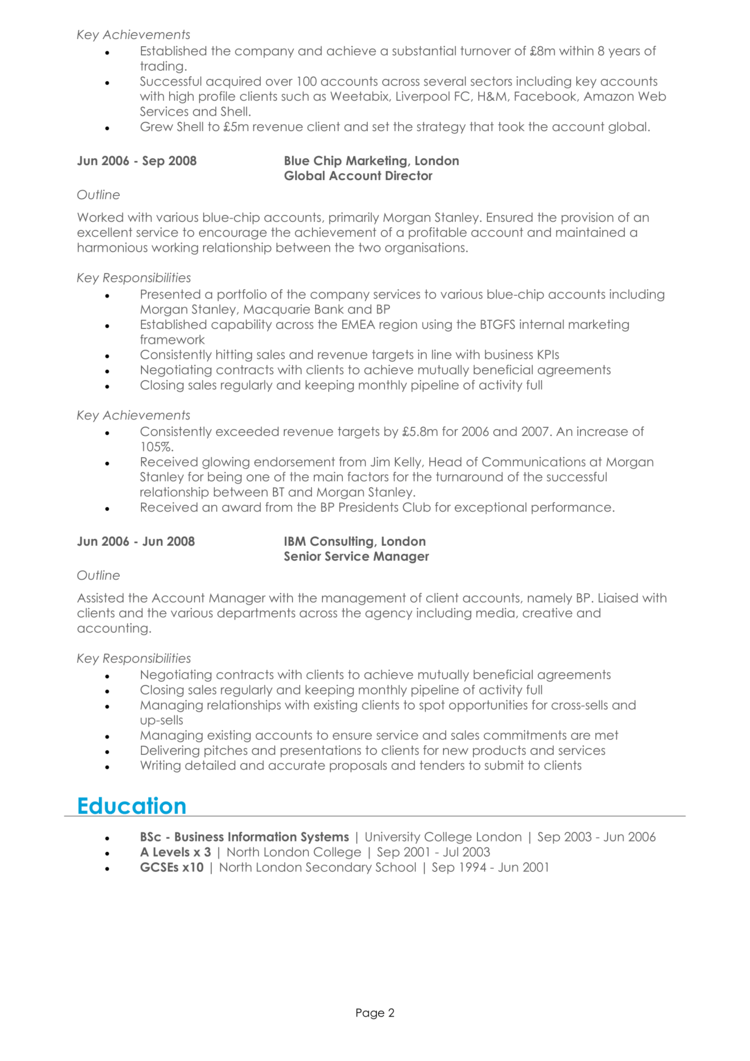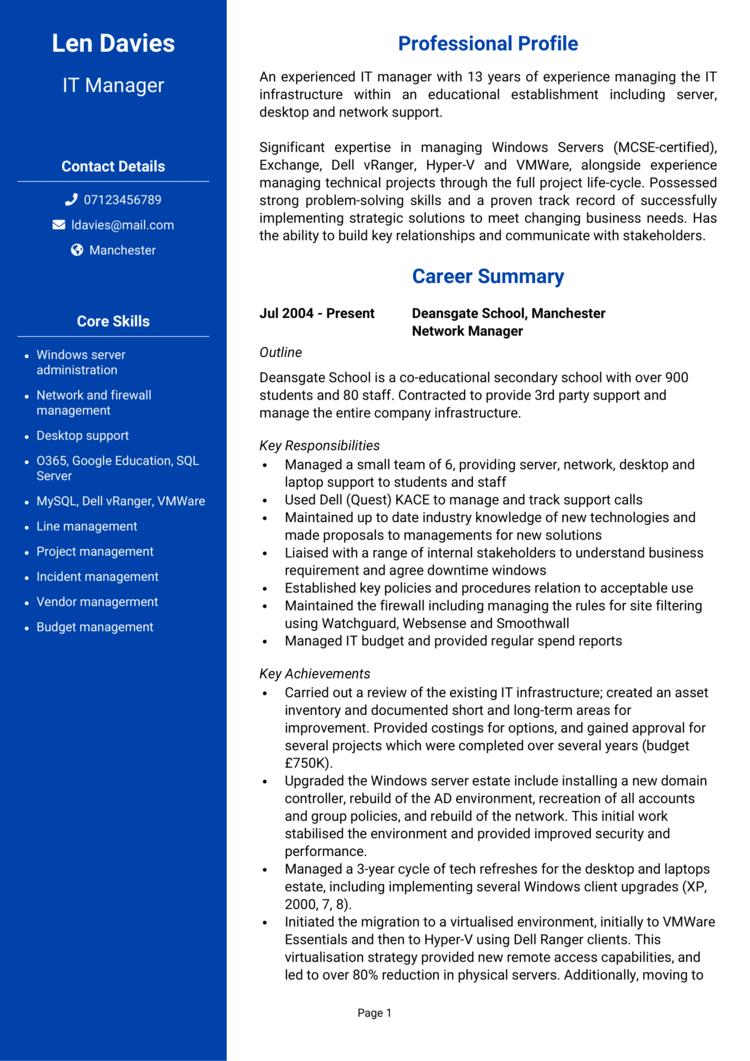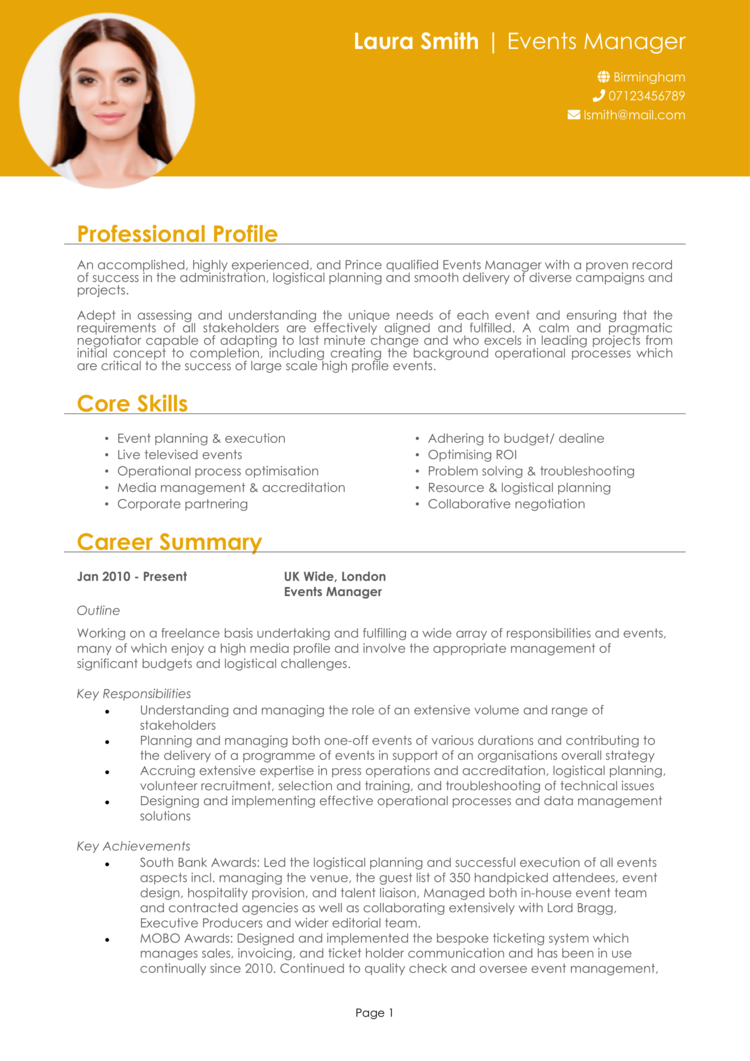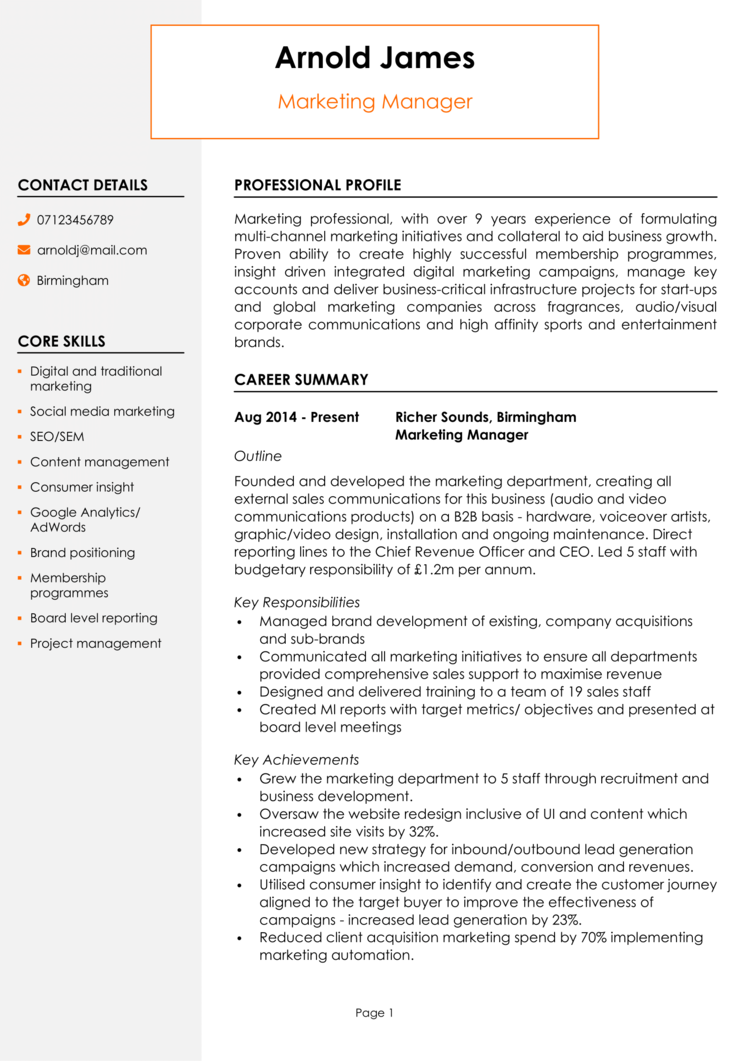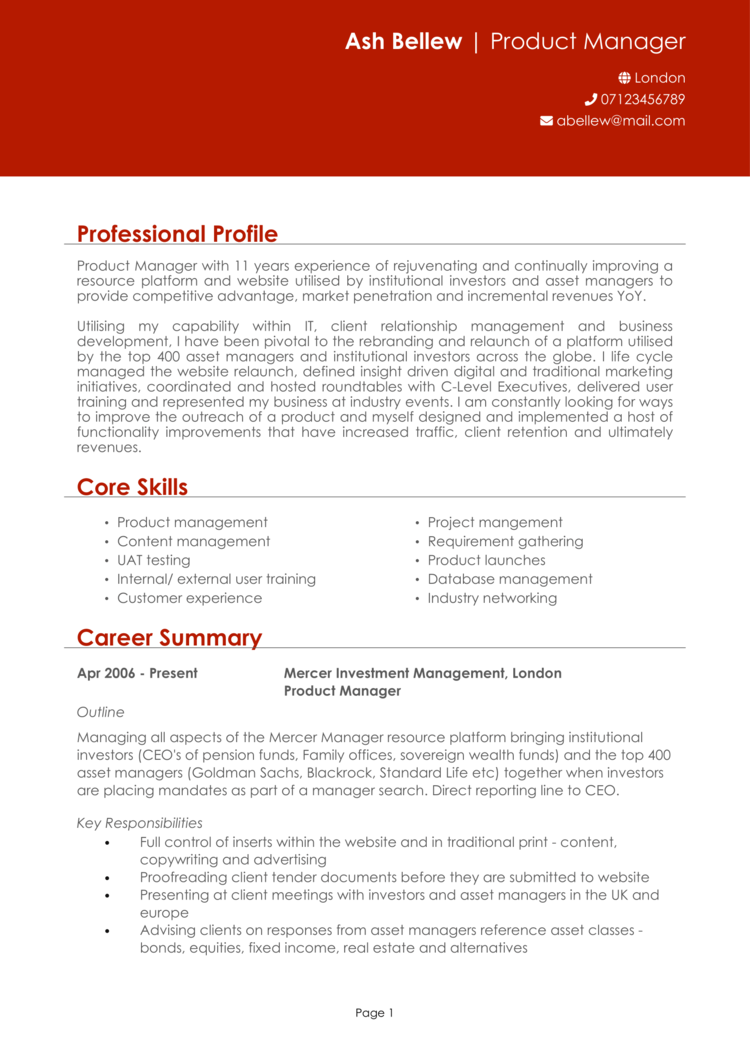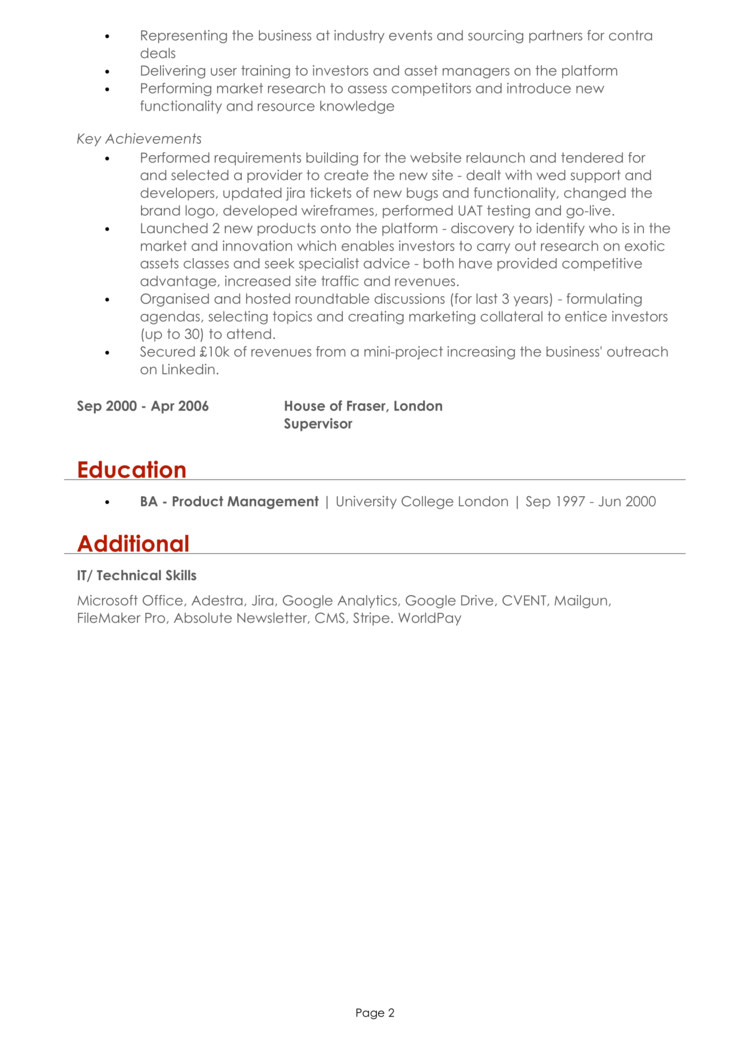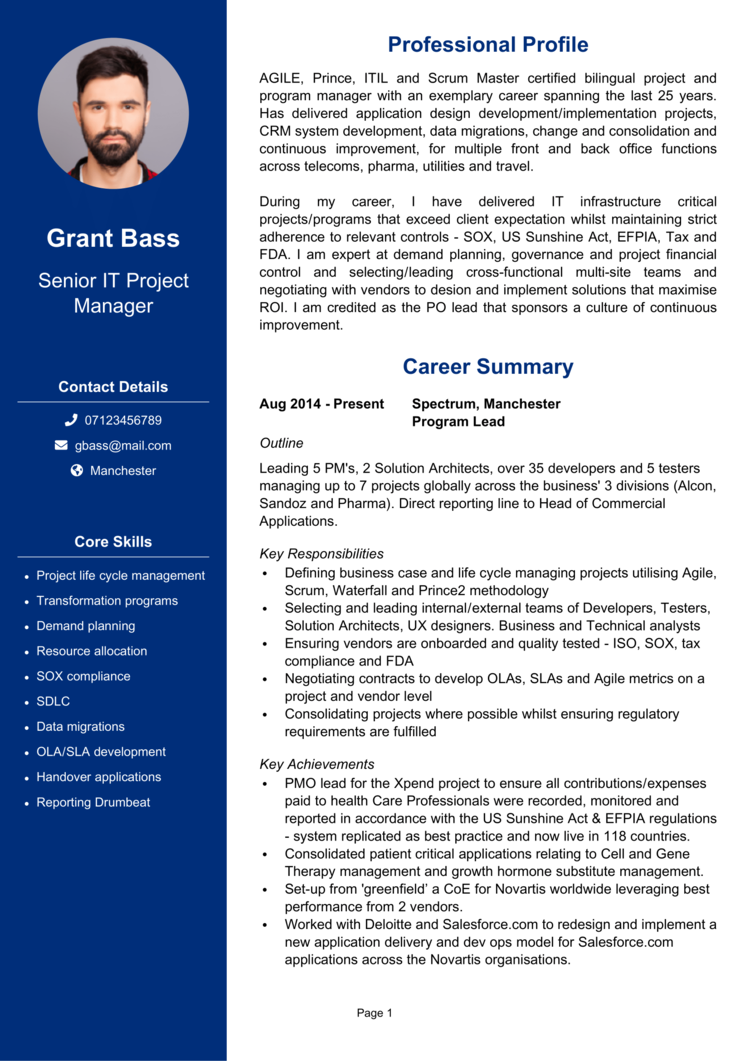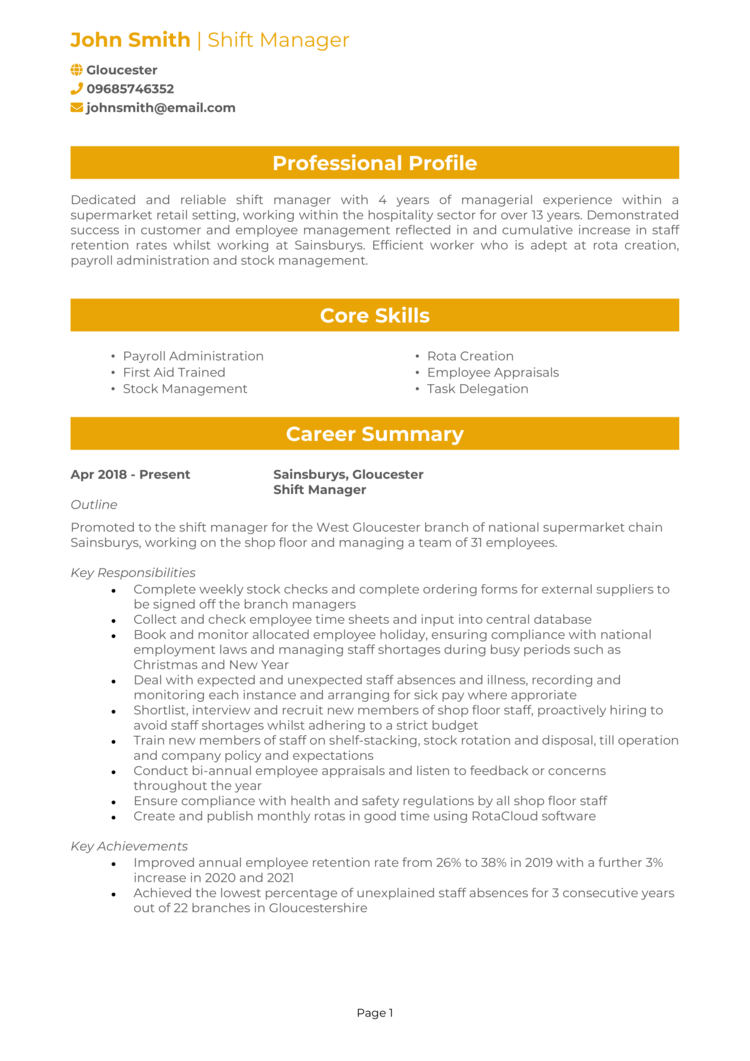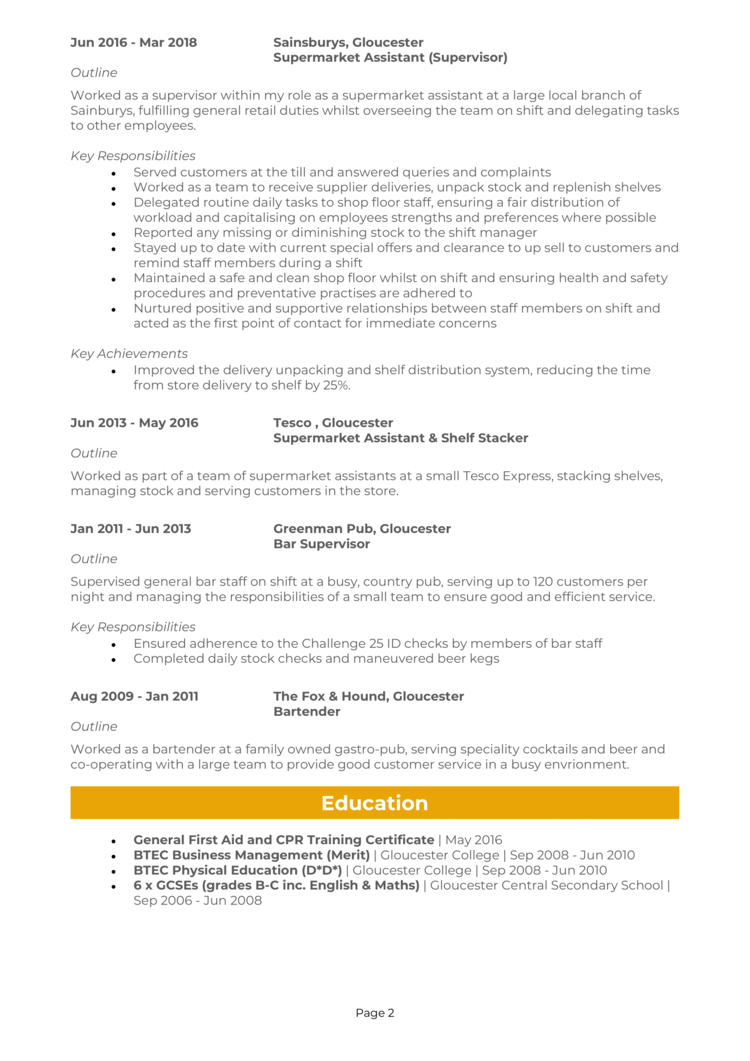If you’re looking to secure a top management job, you need a strong CV that stands out from the crowd.
You need to grab recruiters’ attention, and communicate your leadership qualities clearly, if you want to land interviews.
To help you create a winning CV, I’ve provided 8 example management CVs and templates in this post, along with some guidance on how to write your own.
Guide contents
- Example manager CVs
- Writing your own management CV
- Structure and format
- CV profile
- Work experience
General manager CV example
What makes this a good management CV?
Firstly, this general manager CV is well structured with clearly defined sections and broken up text to ensure that recruiters and hiring managers can read it with ease.
The CV is headed with an eye-catching profile which encourages readers to delve deeper into the CV by summarising all of the candidate’s high level skills and knowledge. This includes their industry exposure and specific elements of management which they have expertise in.
The core skills section provides a snapshot of their most valuable management skills – this ensures that they are seen and digested by the reader as soon as the CV is opened.
The role descriptions are headed with a brief outline of the role which quickly shows recruiters the size and type of team/operations that the candidates is managing, and the industry it is based in. Then bullet pointed responsibilities demonstrate the plans and actions the candidate puts into place in order to lead their people and drive the business forward.
Key achievements are highlighted to show what results the manager has achieved in terms of growth, finance, efficiency etc. This is crucial for proving your value as a manager.


Sales manager CV
What makes this a good management CV?
This sales management CV is headed with a punchy profile which summarises the candidate’s sales and management skills, along with their industry experience and market expertise. This ensures that recruiters get a well-rounded introduction to the candidate when the CV is opened, and quickly understand what the candidate has to offer.
Quick tip: If you struggle with written English, try using our quick-and-easy CV Builder to eliminate the risk of making mistakes.
The bullet pointed core skills section highlights key parts of the candidate’s skills and experience to create a quick snapshot for readers.
Roles are structured with an introductory line to show who the candidate works for, the size of the team they lead, and a general overview of the role. Responsibilities are listed in short bullet points to demonstrate the candidate’s leadership and sales input into the role.
Sales and management are both results driven professions, so key achievements are highlighted and quantified at the bottom of roles.


IT manager CV
What makes this a good management CV?
As an IT manager, it’s important to show a blend of technical and people-management skills, and this CV sets the tone quickly with a profile which summarises them well, in a short sharp manner.
The core skills section also gives readers a good insight into their technical knowledge (hardware, software, systems etc.) as well as their business skills (project management, budgeting etc.)
Roles are broken up for ease-of reading and start with an overview which shows what type of operation the candidate is running, and how many people they are responsible for. A list of bullet-pointed responsibilities allows recruiters to quickly scan the roles and find the skills and knowledge being applied within them.
Key achievements are listed and quantified to show some tangible value that the candidate has added, such as financial savings and system/process improvement in the business.


Events manager CV
What makes this a good event management CV?
The profile sitting at the top of the CV gives recruiters an instant overview of the candidate’s management experience, the types of events they have led, qualifications and key industry skills.
The core skills provides readers with a snapshot of their most valuable attributes, which is great for creating a powerful first impression.
Roles are broken up into concise bullet points which show the candidate’s input into the events being managed and demonstrate in-demand skills and knowledge – this makes it easy for recruiters to skim read and pick out the info they need.
Key achievements at the end of the role highlight specific events led by the candidate, highlighting impressive clients, project size, and results generated.
Marketing manager CV
What makes this a good management CV?
This marketing manager CV catches recruiter’s attention with a punchy profile at the top of the CV which provides an overview of the candidate’s most relevant skills and knowledge (leadership, marketing channels, industry expertise, campaign management etc.)
The core skills section creates a snapshot of the most valuable attributes which is almost impossible for a reader to miss – even from a quick glimpse.
Roles are headed with an intro line which builds context by giving an overview of the role and company.
Responsibilities are broken into short easy-to-read bullet points that show how the candidate applies their skills and knowledge to benefit the firm’s marketing efforts.
Key achievements highlight impressive results the candidate has delivered through the marketing campaigns they have led.


Product manager
What makes this a good management CV?
The profile holds recruiters’ attention by summarising the candidate’s most important product management skills, market knowledge and industry experience. These points are reiterated in the core skills list to create a snapshot that can be easily digested when the CV is opened.
Quick tip: If you struggle with written English, try using our quick-and-easy CV Builder to eliminate the risk of making mistakes.
Roles are headed with an intro sentence which overviews the role, the product being managed and the company being worked for.
Responsibilities are bullet pointed to show the skills and expertise applied during the role, and how they benefit the business.
Key achievements prove how the candidate has impacted the business with quantified results being highlighted.
Project manager CV
What makes this a good management CV?
- A strong profile at the top of the CV highlights the candidate’s project management qualifications and project experience
- The roles are split into an intro line to build context, followed by bullet pointed responsibilities and achievements which demonstrate the candidate’s skills, input and impact.
Shift manager CV
Writing your own management CV
Here are some tips for creating your own interview-winning management CV.
Structure and format
Your CV needs to be easy for busy recruiters and hiring managers to read, as well as looking smart and professional.
In order to achieve this, use the infographic below as guide on structure and format.
Keep the font clear and simple, and break text up as much as possible to make navigation and skim reading easy.
CV profile
Your profile is designed to catch recruiters’ attention and ensure they don’t skip past your CV.
Keep it brief to get your message across quickly and summarise your offerings including things like; industry experience, IT skills, qualifications, product/service knowledge and languages.
Avoid using generic clichés like “motivated team player” as these terms don’t describe factual skills, and recruiters won’t be looking for them.
Work experience
Your roles give you an opportunity to prove how you apply your management skills in the workplace.
Use the following structure to make it easy for readers to understand your contributions and impact.
Manager CV examples and templates
Hopefully you’ve found this guide helpful.
You can also check out my full CV writing guide for more help.
Good luck with your job hunt!


